Posted on May 3, 2014
What does it mean to make queer art now? Paul Clinton asks Carlos Motta and other artists and writers. Read his response in Frieze issue 163
Posted on May 3, 2014
What does it mean to make queer art now? Paul Clinton asks Carlos Motta and other artists and writers. Read his response in Frieze issue 163
Posted on May 5, 2014
do it, installation image, Garage Museum of Contemporary Art, Moscow, 2014
Alexander Shestakov from Kommersant reviewed do it Moscow, recently opened on Thursday, May 1, at the Garage Museum of Contemporary Art in Moscow, Russia. The review highlights the flexible nature of the project curated by Hans Ulrich Obrist, and features many of the enactments in the exhibition including works by Anna Halprin, Felix Gonzalez-Torres, and Erwin Wurm. The article goes on to emphasize the participation of many of the Russian artists in this iteration of do it like Ilya Kabakov and Andrei Monastyrski, together with new instructions by artists Yuri Albert, Nikita Alexeev, Sergey Sitar, Electroboutique, Oleg Kulik, Konstantin Stargazers, Anatoly Osmolovsky Alexander Petrelli and Valia Fetisov.
To read the full article, please click here.
Posted on
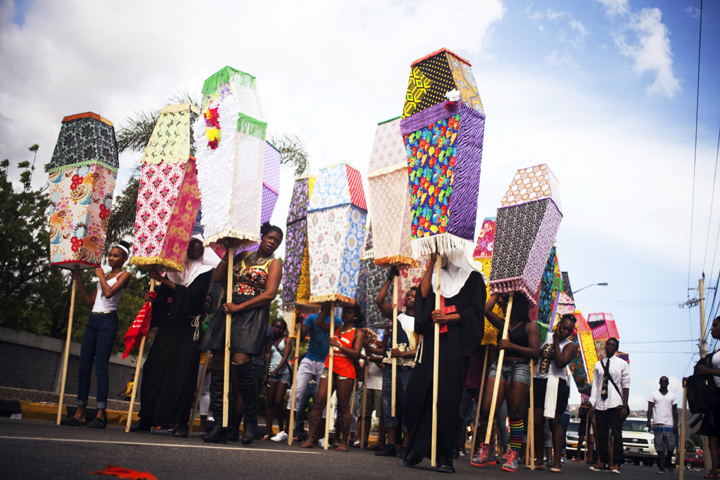
Ebony G. Patterson, Invisible Presence: Bling Memories, performance, April 27, 2014, Kingston, Jamaica. Photographs Monique Gilpin and Philip Rhoden.
Susanne Fredericks recently wrote about Ebony G. Patterson’s performance Invisible Presence: Bling Memories for the Jamaica Observer. The performance, which took place on April 27, 2014 in Kingston, Jamaica, borrowed largely from the funeral practices common in lower-income communities in present day Jamaica, and focused on creating undeniable visibility for the often marginalized social groups in the region. Fredericks gives a detailed description of the procession:
“As one watched the procession approach, led by the St. Michael Steppers community marching band, who cloaked the rhythms of traditional Jamaican funeral songs in the sounds of reggae and dancehall drums and horns, a sea of highly decorated coffins emerged behind them, held high in the air. Fifty of them in total. Contrasting colours and patterns, ‘blinged’-out coffins with feathers, tassels and sequins, moving to the band music. A spectacle in the truest sense of the word.”
The article goes on to describe the meaning of a ‘bling funeral’, and ends with a quote from Patterson about the performance:
“I believe that, irrespective of place and location, we still have the right to all of these things,” the artist adds. “A bling funeral is a powerful declaration of presence, and that is what I have tried to bring to this public space at carnival time. This is ole Mas, not ‘pritty Mas.”
To read the full article, visit the Jamaica Observer’s website, here.
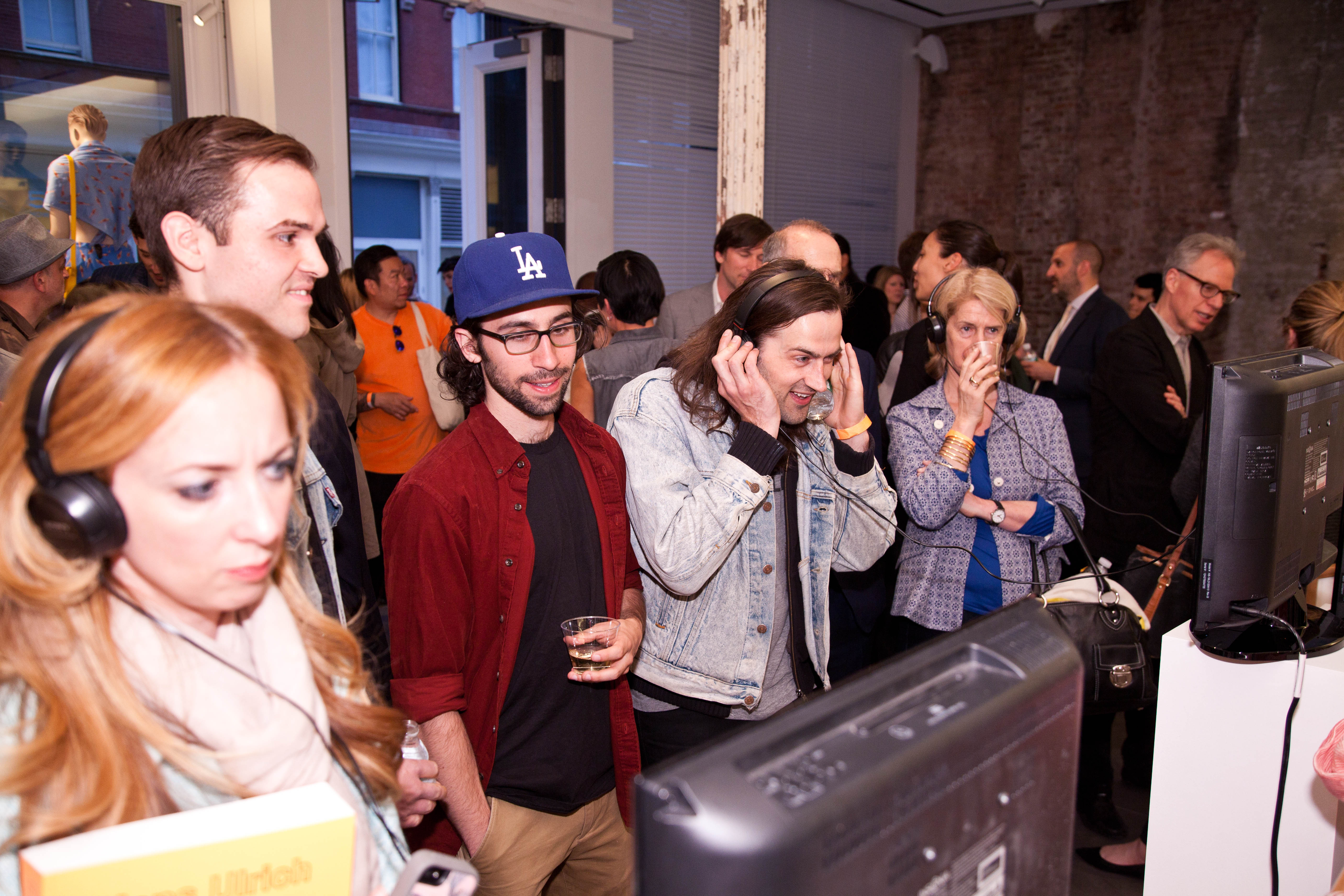








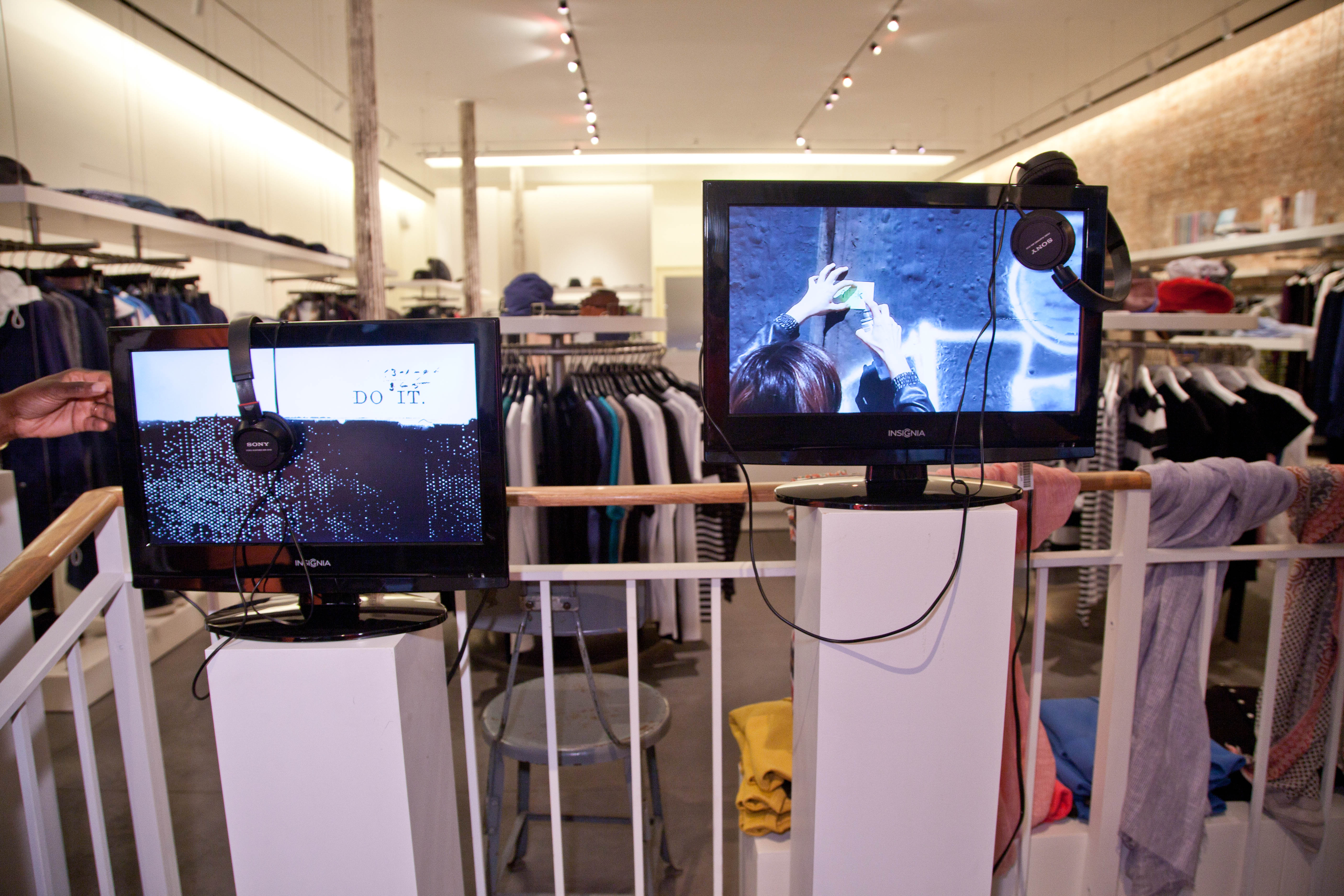









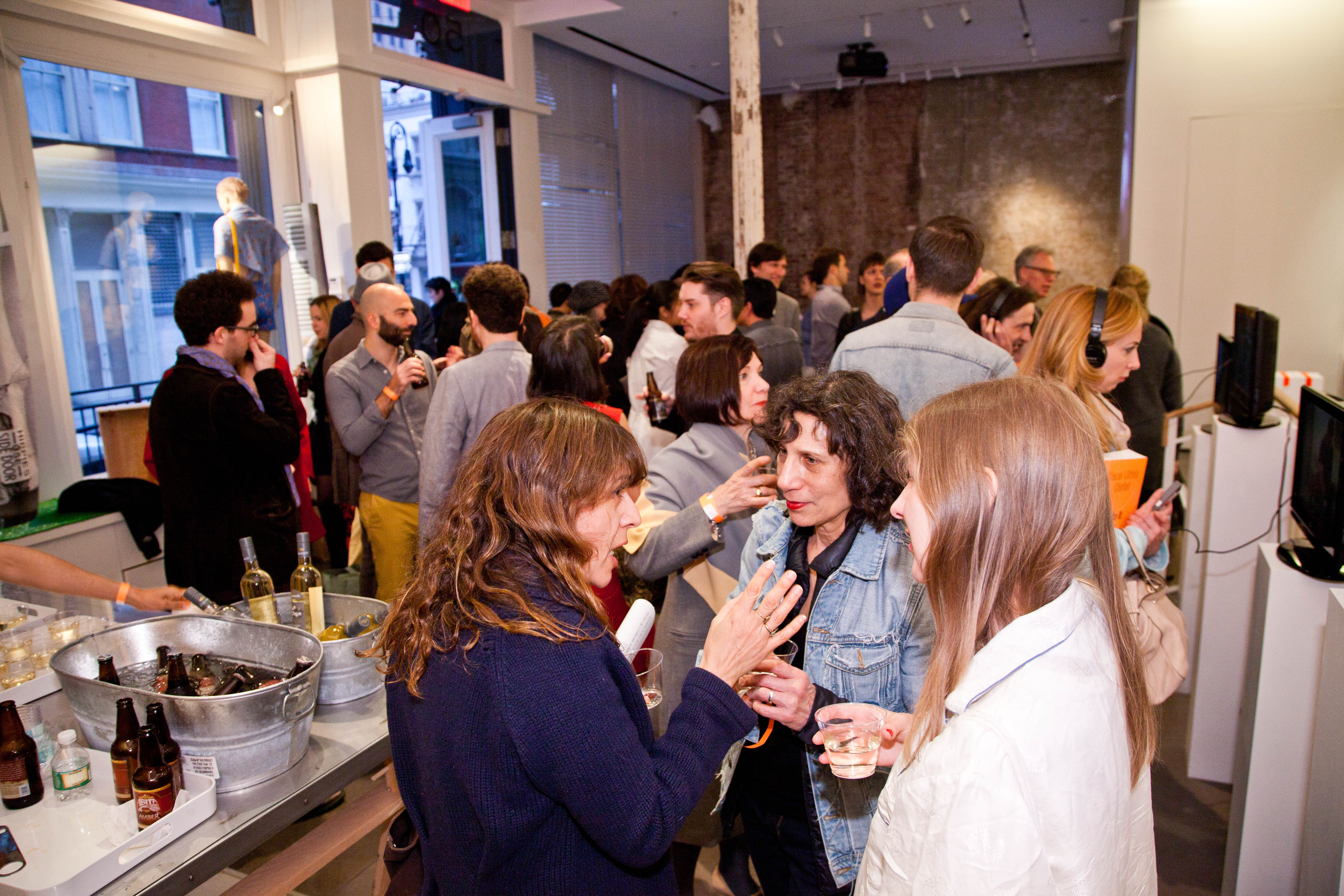







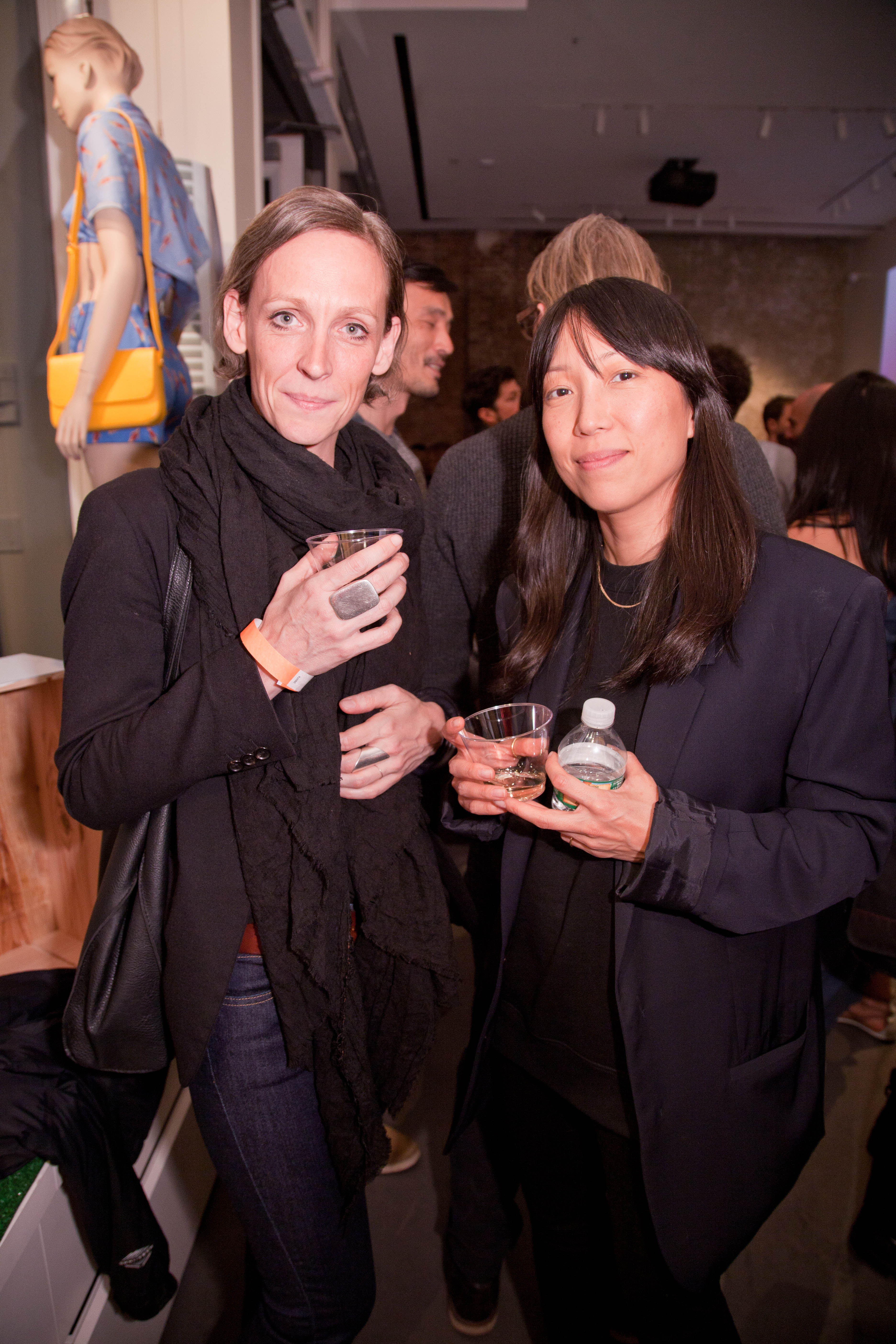

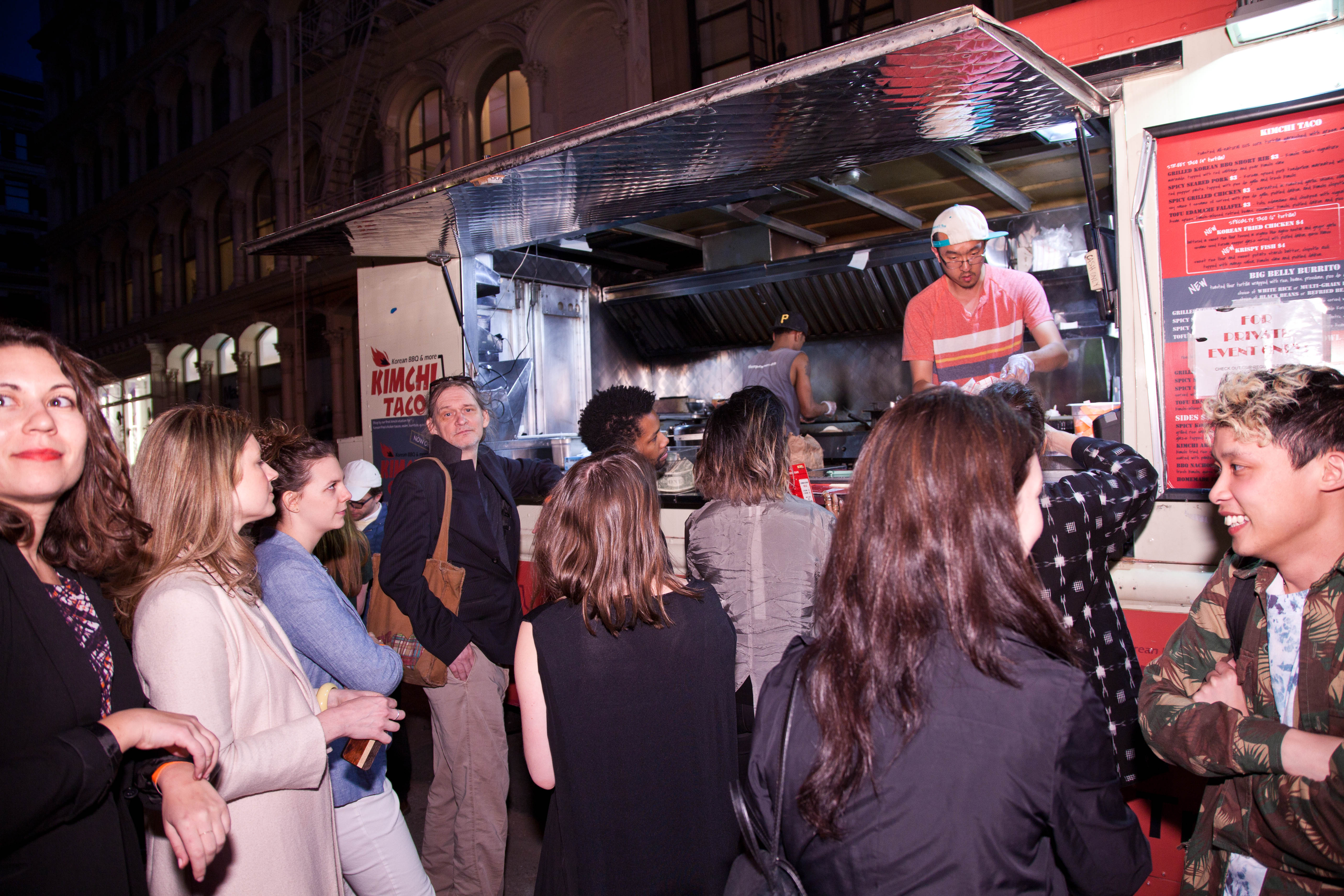


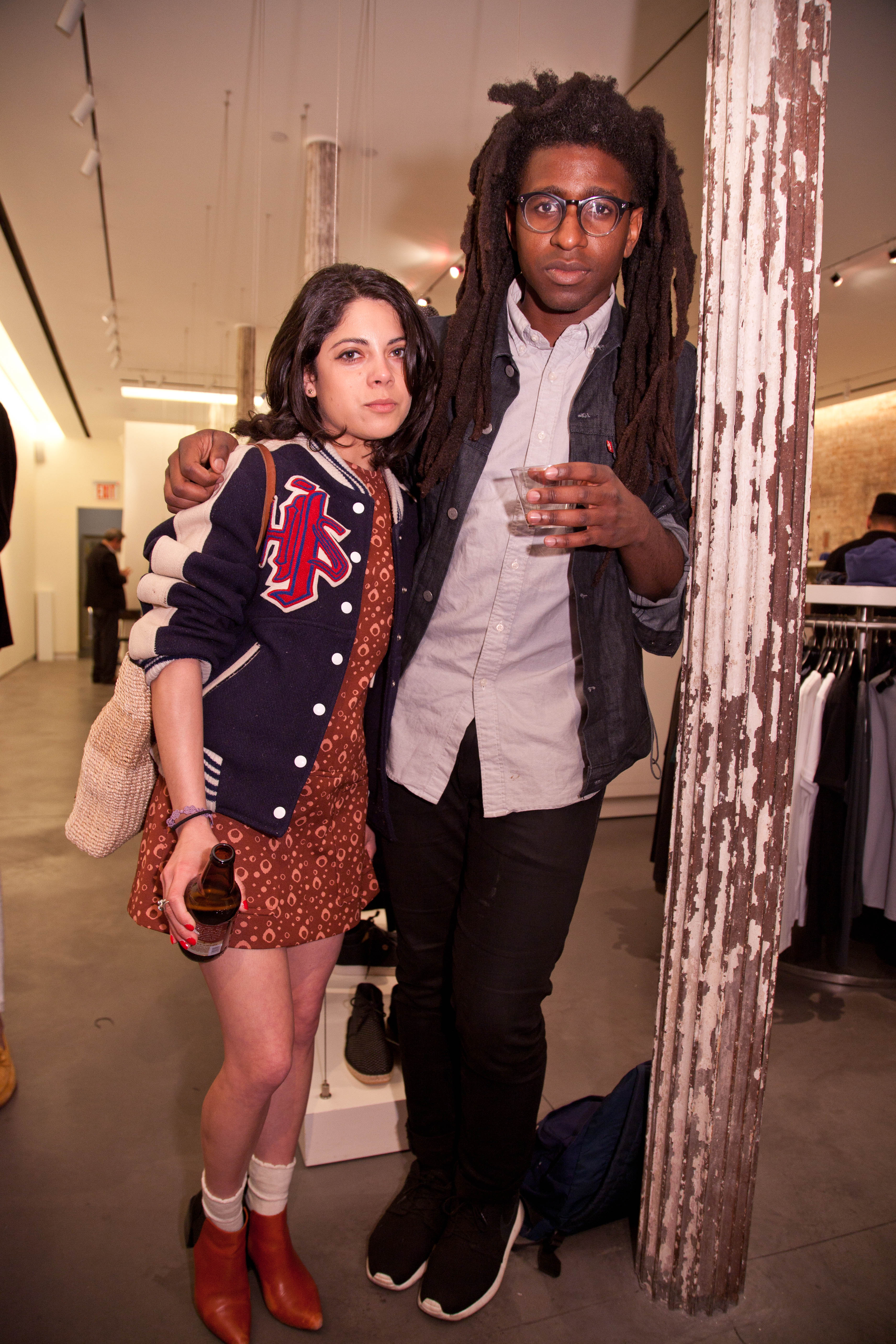


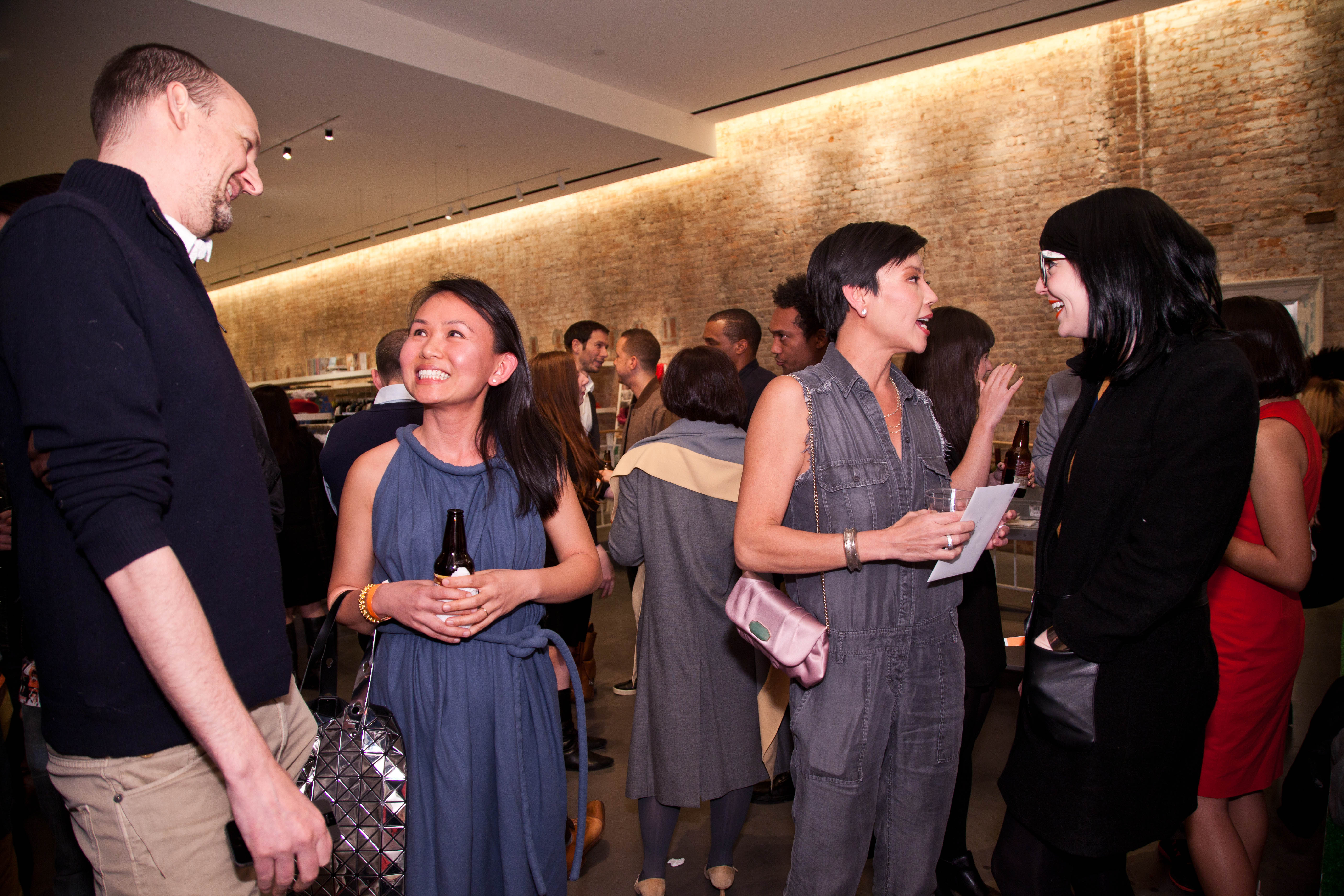


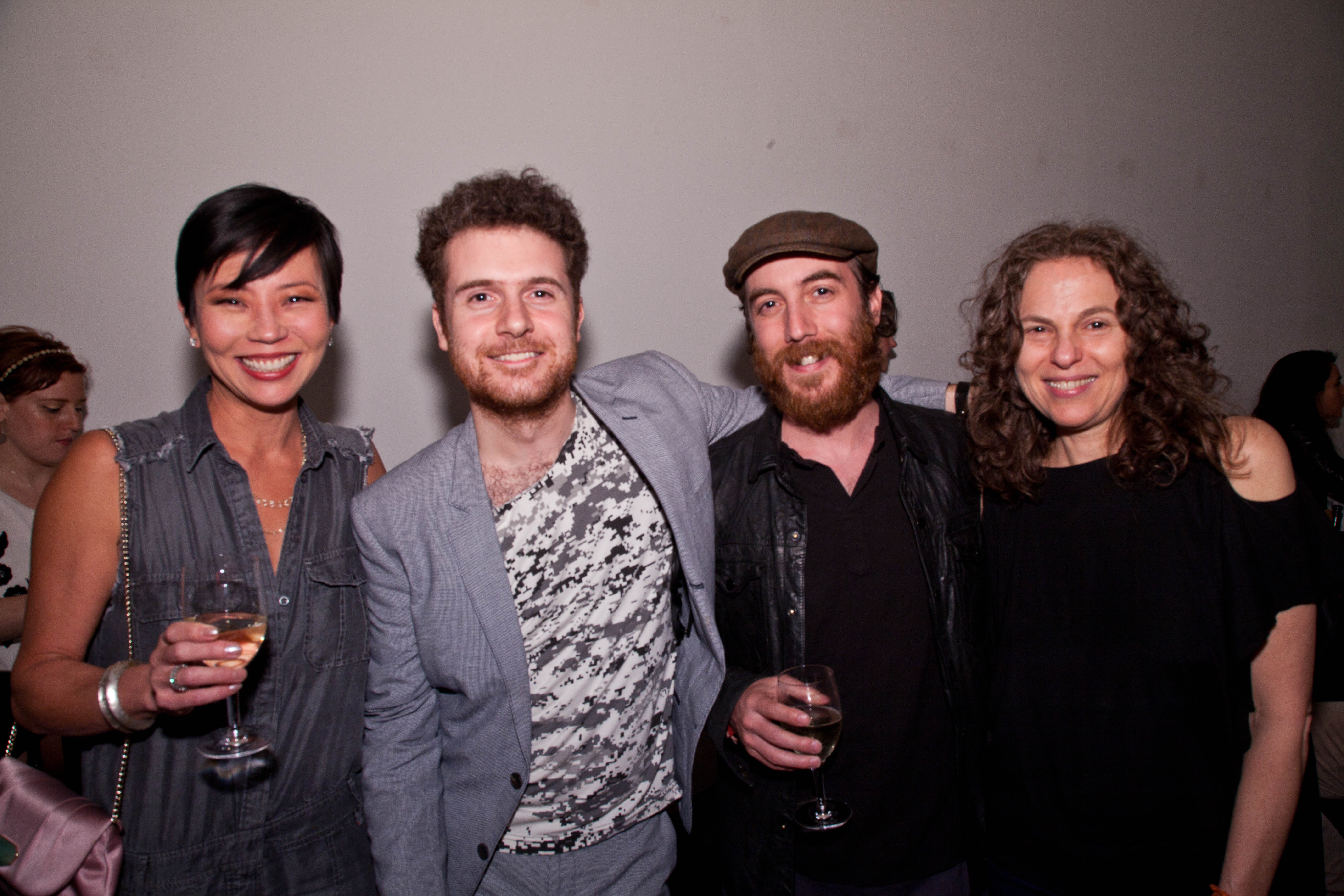


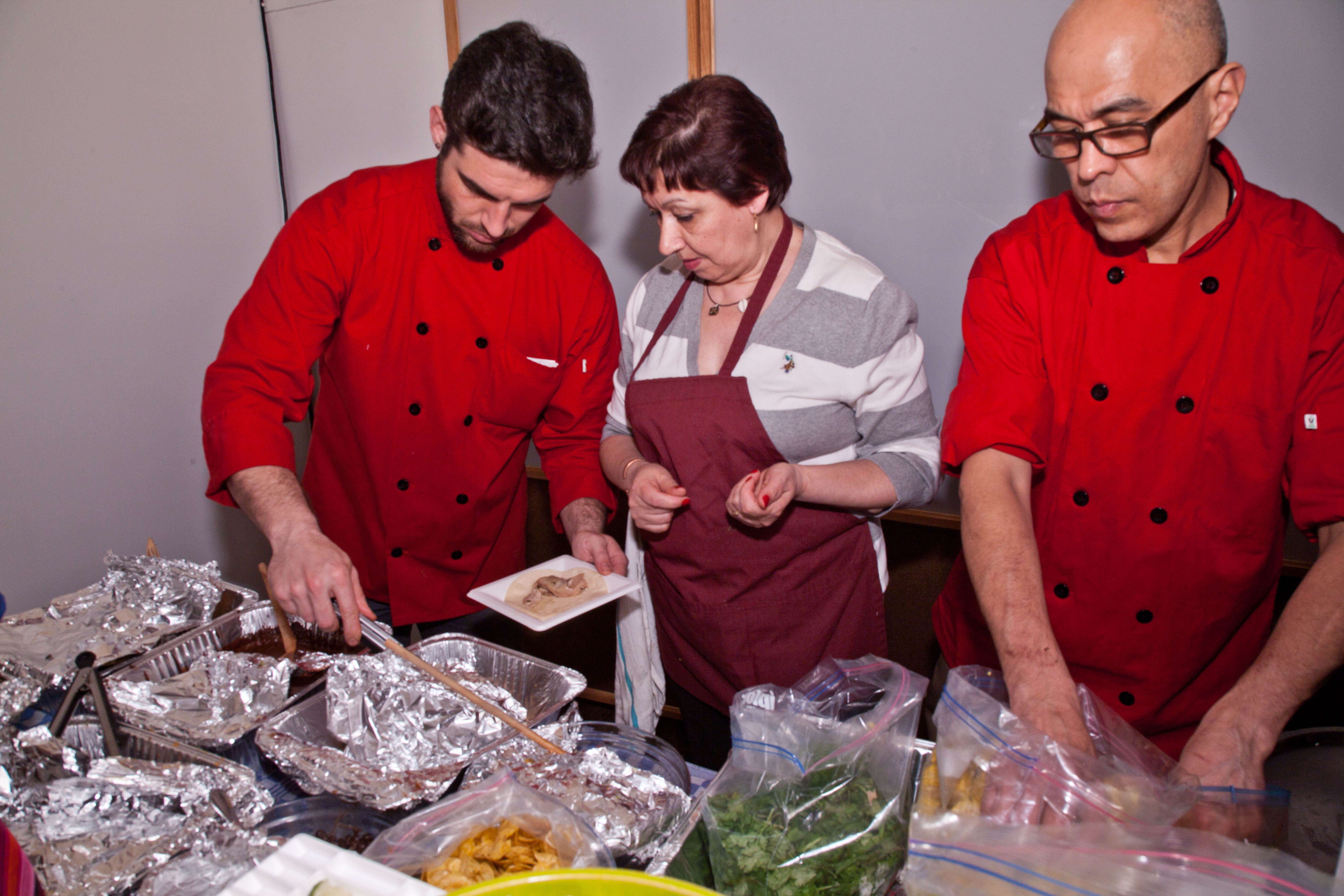

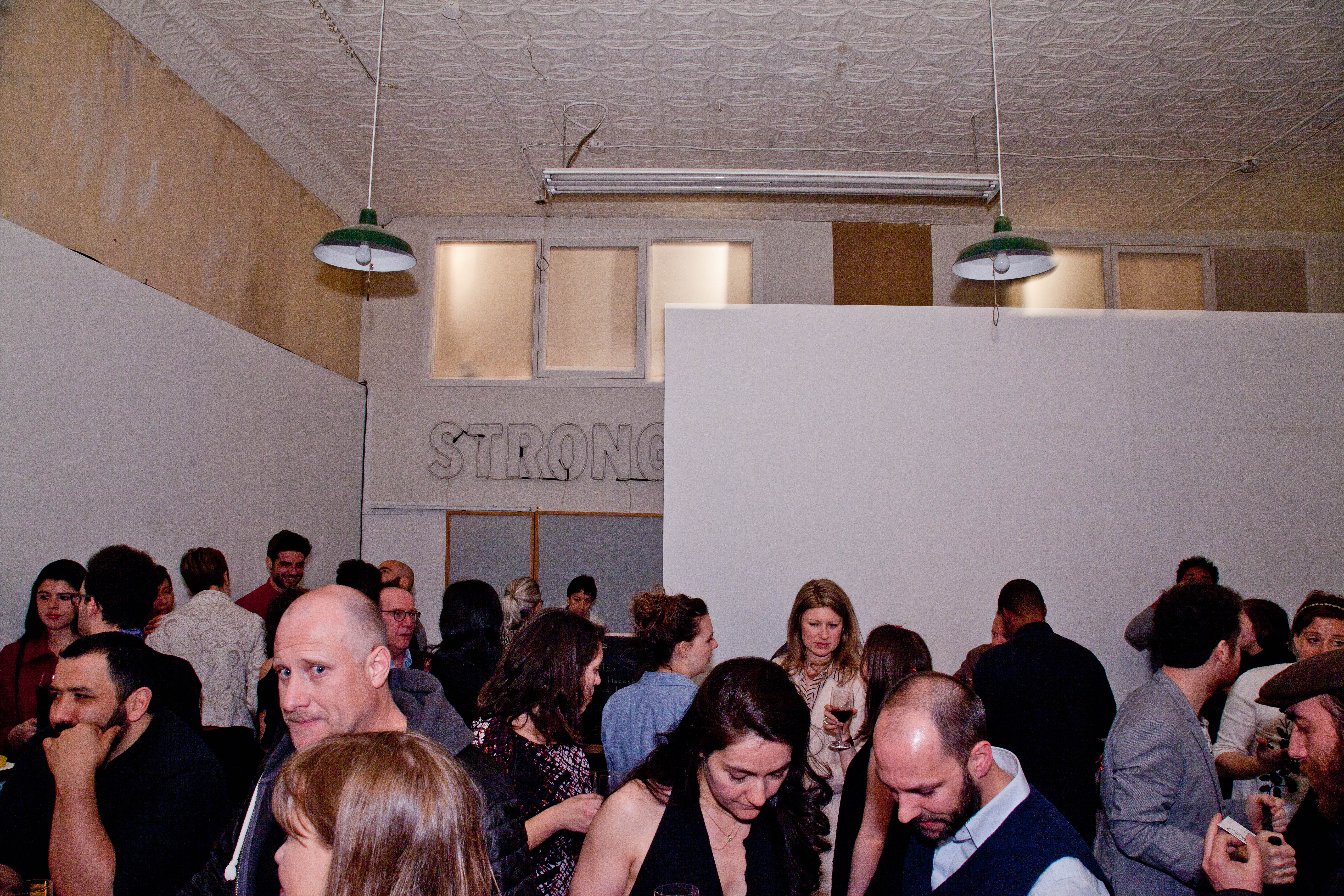
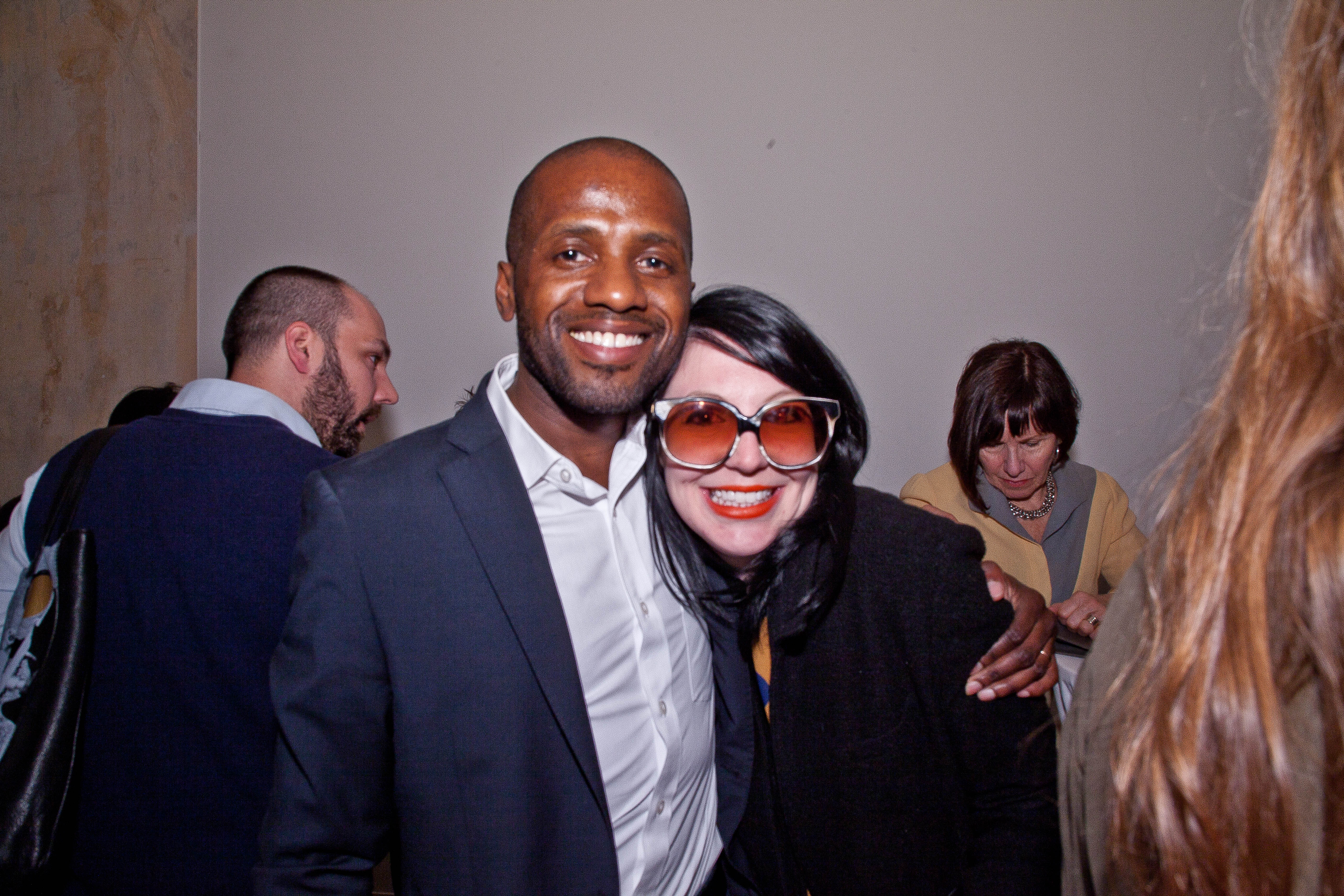





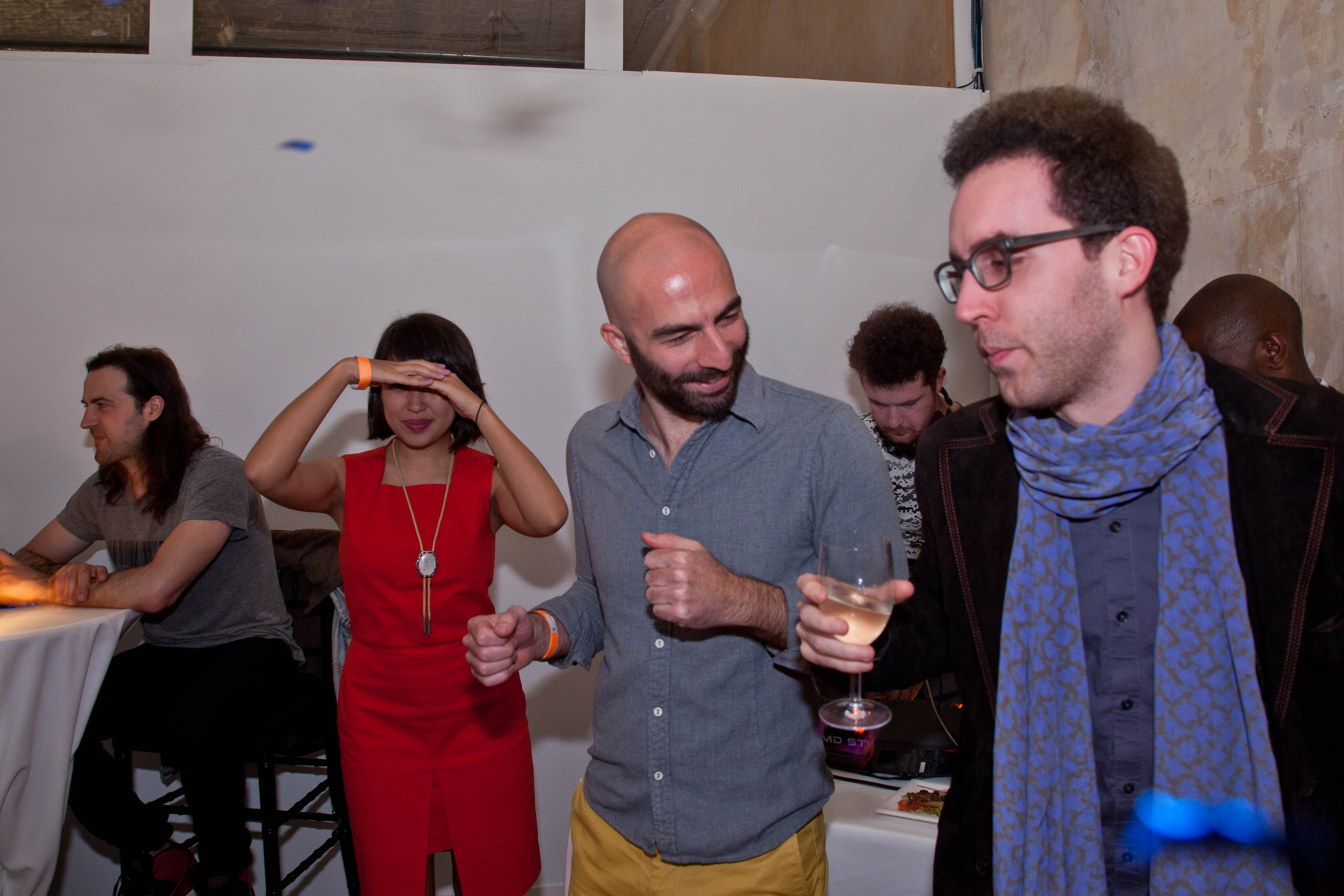
Posted on May 7, 2014
On Monday, May 5 at agnès b. in Soho, ICI and friends celebrated the film launch of do it (short). All photos by Yuko Torihara.

Posted on May 12, 2014
The Colección Patricia Phelps de Cisneros (CPPC) and Independent Curators International (ICI) announce curator María Elena Ortiz as the recipient of the 2014 CPPC Travel Award for Central America and the Caribbean.
María Elena Ortiz has been selected as the third recipient of the CPPC Travel Award for Central America and the Caribbean. The award supports a contemporary art curator based anywhere in the world to travel to regions in Central America and the Caribbean to conduct research related to art and cultural activities, generating new collaborations with artists, curators, museums, and cultural centers within regional networks.
María Elena will use the award to visit new and established contemporary art centers, artist initiatives, and film festivals in the Caribbean countries of Aruba, the Bahamas, Martinique, and Trinidad and Tobago. She will conduct interviews with local cultural producers and studio visits with artists to investigate film and video practices with the aim of strengthening the ties between art in the Caribbean and the Diaspora in the local community of Miami, as well as nurturing contemporary approaches to film and video in the region.
María Elena Ortiz (b. Puerto Rico) currently works as a Curatorial Assistant at the Pérez Art Museum Miami (PAMM). Previously, she worked as the Curator of Contemporary Arts at the Sala de Arte Público Siqueiros in Mexico City, where she organized several projects including Carlos Motta, The Shape of Freedom (2013) and Rita Ponce de León, David (2013). Ortiz has also collaborated with institutions such as TEOR/éTica, San Jose, Costa Rica; Tate Modern, London; the Museum of Craft and Folk Art, San Francisco, and New Langton Arts, San Francisco, among others. In 2012, she curated Wherever You Roam at the Museum of Latin American Art, Long Beach, California. Ortiz has contributed to writing platforms including Fluent Collaborative, Curating Now, and DaWire. She has a Masters in Curatorial Practice from the California College of the Arts (2010).
María Elena Ortiz was selected from 66 applicants from 23 countries. The selection was made by a jury of professionals, which included Mariangela Méndez (independent curator), Federico Herrero (artist), and María del Carmen Carrión (Associate Director of Public Programs & Research, ICI). In their selection, the jury considered the immediate and the long-term benefits and impact of each proposal for the places, institutions and artists visited, as well as projects that favor new understandings and readings of the artistic production of the region.
About The Colección Patricia Phelps de Cisneros
The Colección Patricia Phelps de Cisneros (CPPC) works to increase understanding and awareness of Latin America’s contributions to the history of art and ideas, and to support innovation, education, creativity, and research in the field of Latin American art. Through grants and partnerships, the CPPC also supports the professional development of Latin American artists, curators, and scholars. Recent initiatives include, among others, a sponsorship to create a Curatorial Fellowship at dOCUMENTA (13) in Kassel, Germany; a partnership with Hunter College (New York) to create the Patricia Phelps de Cisneros Professor of Latin American Art; and a grant for a Venezuelan artist to assist to the residency program Soma SUMMER in Mexico City.


Posted on May 13, 2014
Image Credit: Jure Eržen.
Independent Curators International (ICI), l’Institut français in Paris, and the Cultural Services of the French Embassy in New York announce curator Nataša Petrešin-Bachelez as the 2014 ICI/French Institute Fellow.
ICI, l’Institut français in Paris, and the Cultural Services of the French Embassy in New York are pleased to announce that Nataša Petrešin-Bachelez has been selected as the third ICI/French Institute Fellow. The fellowship program offers a French curator a new opportunity for international research and the development of professional networks. The program spans over a period of six months and includes two visits to the U.S., where the Fellow will use ICI as a base.
Nataša Petrešin-Bachelez’s research will focus on cooperative practices in curating and on common urgencies, solidarities, empathy and antagonisms of dynamic networks, including cooperatively-run spaces, advocacy groups, and artist activist groups. Taking L’Internationale, a consortium of European art institutions, as a starting point for this research, she will explore the possibilities of participation in the global exchange of ideas from any given space. Petrešin-Bachelez’s research and details on related events will be available on ICI’s website.
About the Fellow
Nataša Petrešin-Bachelez is an art critic and independent curator based in Paris, France. She is currently managing editor of the online platform of the European museum confederation L’Internationale, comprised of Moderna Galerija, Ljubljana; Museo Nacional Centro de Arte Reina Sofía, Madrid; Museu d’Art Contemporani de Barcelona, Barcelona; Museum van Hedendaagse Kunst Antwerpen, Antwerp; SALT (Istanbul and Ankara); and Van Abbemuseum, Eindhoven. The online platform is hosted by KASK/School of Arts in Ghent. In 2010 she was appointed co-director of the Laboratoires d’Aubervilliers. Since 2006 she has co-organized the seminar “Something You Should Know,” EHESS, Paris, France. In 2010 she was associate curator of The Promises of the Past, Centre Pompidou, Paris, and guest curator of Paris Photo. Curatorial projects include: Tales of Empathy, Jeu de Paume, Paris (2014), Yona Friedman. Around Ville spatiale, Mala galerija, Ljubljana (2010); Conspire! Festival transmediale 08, Haus der Kulturen der Welt, Berlin, Germany (2008); Distorted Fabric, De Appel, Amsterdam, The Netherlands (2007); Participation: Nuisance or Necessity?, lASPIS, Stockholm, Sweden (2005); Our House is a House that Moves, Galerija Škuc, Ljubljana, Living Art Museum, Reykjavik, Iceland (2003). She was co-curator of the project Société Anonyme, Le Plateau and Kadist Art Foundation, Paris (2007). She has contributed to magazines including e-flux journal, Springerin, Parkett, Bidoun, and Sarai Reader, and is a member of the editorial board of ARTMargins. Since 2011 Petrešin-Bachelez has been chief editor of Manifesta Journal.
About L’Institut français in Paris
L’Institut français is the governmental agency for the promotion of French culture abroad and the operator of the French Ministry of European and Foreign Affairs for artistic collaboration in performing arts, visual arts, architecture, as well as for the dissemination of French books, cinéma, language, thinking, and ideas. L’Institut français works in close relationship with the French cultural services abroad, including 150 local French institutes and almost 1,000 French alliances. It also collaborates with the French Ministry of Culture and Communication through a partnership agreement.
www.institutfrancais.com
About The Cultural Services of the French Embassy in the U.S.
The Cultural Services is a division of the French Embassy in the United States. The Cultural Services was first imagined in the 1930’s by Paul Claudel. In 1945 General de Gaulle appointed Claude Lévi-Strauss as the first Cultural Counselor, with the mission of providing Americans (individuals and organizations) with access and resources to engage with French culture and promote it in their own communities.

 UPDATE: MAY 2015
UPDATE: MAY 2015
Nataša Petrešin-Bachelez has published a text, as an outcome of her research for the ICI/French Institute Fellowship. The full text is available HERE.


Posted on

Posted on May 14, 2014
Create installation view, Longwood Center for the Visual Arts, 2013
Create co-curator Matthew Higgs is partnering with the Elizabeth A. Sackler Center for Feminist Art to present the first major retrospective exhibition of the work of Judith Scott. Scott’s artwork, which was prominently featured in Create, will be on view at the Brooklyn Museum from October 24, 2014 – March 29, 2015. Titled Judith Scott—Bound and Unbound, the exhibition will feature Scott’s remarkable sculptures and 3D assemblages as well as a selection of works on paper. About Scott’s artistic practice, the Brooklyn Museum states:
“Judith Scott’s work is celebrated for its astonishing visual complexity. In a career spanning just seventeen years, Scott developed a unique and idiosyncratic method to produce a body of work of remarkable originality. Often working for weeks or months on individual pieces, she used yarn, thread, fabric, and other fibers to envelop found objects into fastidiously woven, wrapped, and bundled structures.”
To read more about the upcoming exhibition, visit the Brooklyn Museum’s website, here.

Posted on May 21, 2014
Image: Kemi Bassene, Lemba, 2013
2014 ICI CURATORIAL FELLOWSHIP
ICI’s 2014 Curatorial Fellow Sumesh Sharma seeks to uncover the complex histories of colonialism in Africa, Middle East and South Asia by examining the funding mechanisms and institutional support of art institutions that utilize the power structures put in place by colonial laws. Looking at art and activist practices in former French and British colonies, in particular Senegal, as case studies, Sharma seeks to find a non-linear history of activism (during pre- and post-colonial rule) through the work of artists-as-agents of gender, sexual, and racial equality. Sharma will use the Curatorial Fellowship to follow shared artistic sensibilities across continents, investigating pragmatic and philosophical approaches, such as Afro-Futurism, to art history that subvert colonial structures and tackles systems of discrimination.
ABOUT THE FELLOW
Sumesh Sharma is a curator based in Mumbai who co-founded the Clark House Initiative in 2010, a curatorial collaborative project located in an old office of the Thakur Shipping Company, which seeks to address the freedom that “you don’t yet know you don’t have.” His interests include alternate art histories and projects informed by socio-economics and politics that often include cultural perspectives, immigrant culture in the Francophone, vernacular equalities, and movements of black consciousness in culture.
Posted on May 23, 2014
Recent article on Riason Naidoo from The Guardian (May 16, 2014):
“Blood on the walls as South Africa’s national gallery axes first black director” by Marianne Tham
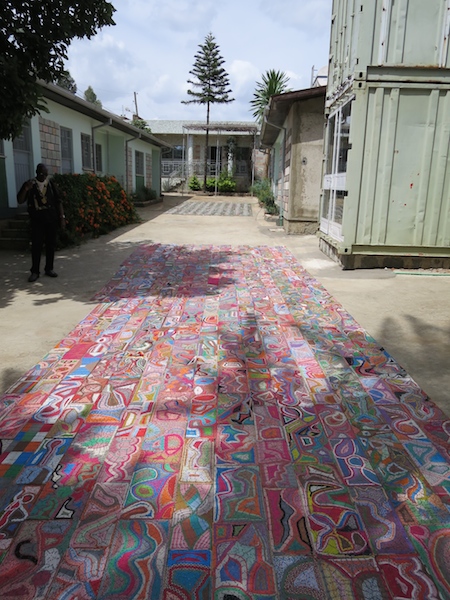
Posted on May 28, 2014
From May 13–19, 2014, the Curatorial Intensive in Addis Ababa brought together a group of 11 curators to participate in seminars, site visits to local art spaces, studio visits with artists, and individual meetings with faculty.
Participating curators included: Philip Balimunsi (Kampala, Uganda), Helen Carey (Limerick, Ireland), Makeda Damtew (Addis Ababa, Ethiopia), Mohamed Hussein (Baghdad, Iraq), Mihret Kebede (Addis Ababa, Ethiopia), Wanja Kimani (Addis Ababa, Ethiopia / Nairobi, Kenya), Anna Kućma (Kampala, Uganda / Krakow, Poland), Georgina Maxim (Harare, Zimbabwe), Jillian Schultz (Los Angeles, CA, USA), Fitsum Tefera (Addis Ababa, Ethiopia), and Zoma Wallace (Washington DC, USA).
Over the course of the program, participants engaged in discussions with their fellow curators, as well as received feedback from the faculty advisors, in order to critically develop an exhibition or curatorial project idea. The Curatorial Intensive forged strong connections among these international colleagues, and initiated a dialogue for future collaborations and projects.
Meskerem Assegued, Director of Zoma Center for Contemporary Art (ZCAC), our local collaborator, hosted the Curatorial Intensive in the unique art space constructed by artist Elias Sime using traditional mud-house technique. This was the first time the Curatorial Intensive has been hosted inside an artwork! We also visited the artist, Elias Sime, whose work speaks about the importance of collaboration as a poetic reflection of societies. He generously laid out some new pieces for us to see at his studio.
Meskerem’s presentation focused on the importance of collaboration, international partnerships, and the need for independent thinking. It was articulated around a series of exhibitions she curated and art spaces she created in Addis since the late 1990s.
Konjit Seyoum, Director of Asni Gallery, walked us through the history of this pivotal independent space in Addis Ababa. She founded Asni with the desire to create a conceptually and economically independent space, open to all audiences in Ethiopia, which she certainly has managed to achieve. She made a strong case for the importance of experimental spaces, and her experience and vision inspired many new perspectives on the next generation of art spaces and curators.
Building on this knowledge of independent spaces, Jimmy Ogonga, spoke of the Center for Contemporary Art, East Africa (CCA Nairobi) which he co-founded. He also mapped the art scene of Nairobi from the 1960s to the present, highlighting the important role that artist collectives have played in the development of the scene there. And Elvira Dyangani Ose, Curator of International Art, Tate Modern, spoke of her practice as an independent curator, examining her past projects and drawing from a history of exhibitions of African Art that have been influential to her practice. She also spoke of her current work and focus at Tate Modern.
We heard perspectives from large art institutions in the continent too. Riason Naidoo spoke about the importance of going beyond formal criteria of evaluation when working with a collection, in order to construct rich and nuanced narratives. His talk sparked reflections on issues of representations and the construction of national history through art collections. He presented on the exhibition 1910–2010: From Pierneef to Gugulective at the National Gallery of South Africa in Cape Town, and the project The Indian in DRUM Magazine.
Since joining the National Gallery of Zimbabwe, Raphael Chikukwa has been doing extraordinary work, strengthening the institution and developing exhibitions of art from Zimbabwe for the local and international context. He spoke at length about the Zimbabwe Pavilions, which he curated for the Venice Biennale in 2011 and 2013, and plans for the future of the National Gallery.
On the final day of the program, the participants presented the proposals that they developed throughout the week and with feedback from many of the faculty. This took place at a public symposium hosted by the British Council in Addis Ababa. The final presentations were given in three panels, focused on the following themes:
1. Recovering Memory: archives and collections
2. Understanding Contexts and Creating Networks: international exchanges
3. Artistic Practice and Public Space
ICI